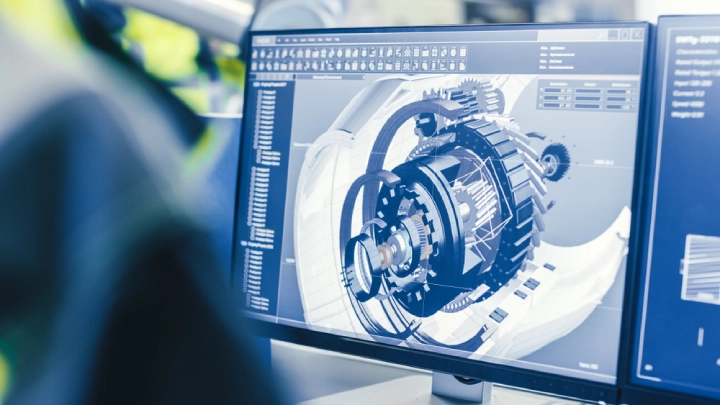
In the world of design, engineering, and architecture, CAD was touted as a game-changer. Much like its partner technology CAM, its applications span from architectural wonders to cutting-edge engineering projects, empowering designers and engineers to create with unprecedented precision and efficiency. But what exactly is CAD, and why does it hold such importance in various industries?

Table of contents
Defining Computer-Aided Design
CAD, short for Computer-Aided Design, refers to the use of computer software and technology to create, modify, and optimise designs for various applications. It enables professionals to draft, visualise and simulate designs with precision, accuracy, and efficiency that traditional manual drafting methods cannot match.
Applications of CAD
Architectural marvels
Architects and building designers have embraced CAD as an indispensable tool. The software allows them to create detailed and accurate architectural plans, 3D models, and blueprints. This precision in design ensures that structures meet safety standards, adhere to zoning regulations, and are aesthetically pleasing.
Engineering innovation
Engineers across multiple disciplines rely on CAD to conceptualise and develop complex mechanical, electrical, and civil engineering projects. CAD’s ability to produce detailed 2D and 3D models aids in the prototyping and testing of new products, machinery, and systems. It facilitates collaboration among multidisciplinary teams working on a project, leading to better-designed and more efficient solutions.
Benefits of CAD
Enhanced efficiency
CAD significantly reduces the time and effort required for design tasks compared to manual drafting. It offers features like copy-pasting, mirroring, and automated dimensioning, streamlining the design process. Modifications are also easier to make, as changes can be applied with a few clicks.
Improved precision and accuracy
CAD software ensures precision and accuracy in designs, reducing the risk of errors that can be costly in terms of materials, time, and resources. Designers can zoom in on details, make precise measurements, and analyse components, resulting in better-quality products and structures.
Examples of CAD Software
AutoCAD
AutoCAD, developed by Autodesk, is one of the most widely used CAD software packages globally. It’s known for its versatility and is favoured by architects, engineers and designers for 2D and 3D modelling, drafting, and documentation. AutoCAD offers specialised versions for various industries, making it a comprehensive CAD solution.
SolidWorks
SolidWorks, also developed by Dassault Systèmes, is a popular CAD software used mainly for 3D modelling and product design. It’s heavily utilised in industries such as manufacturing, automotive, and aerospace. SolidWorks is renowned for its parametric design capabilities and simulation tools.
The author generated this text in part with GPT-3.5, OpenAI’s large-scale language-generation model. Upon generating draft language, the author reviewed, edited, and revised the language to their own liking and takes ultimate responsibility for the content of this publication.






